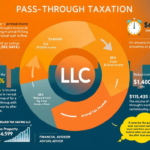Last week President Trump signed an executive order putting a halt on evictions through the end of the year following guidance from the CDC that mass evictions could lead to excessive homelessness and the crowding of shelters. This is the largest eviction moratorium ever to be executed, covering approximately 40 million renters across the nation.
The CDC order states, “In the context of a pandemic, eviction moratoria — like quarantine, isolation, and social distancing — can be an effective public health measure utilized to prevent the spread of communicable disease. Furthermore, housing stability helps protect public health because homelessness increases the likelihood of individuals moving into congregate settings, such as homeless shelters, which then puts individuals at higher risk to COVID-19.”
Not All Renters Qualify
To qualify for the eviction moratorium, individuals must earn less than $99,000 a year, $198,000 for couples, or have received a stimulus check. Those who weren’t required to pay income taxes in 2019 are also eligible.
Renters will have to sign an official document stating that :
- They have used their best efforts to look for financial assistance,
- They are unable to afford their rent payment due to loss of income or extraordinary medical expenses,
- If they were to be evicted, they would either be homeless or have to move in with others.
- They promise to make partial payments to the best of their ability.
The official declaration form from the CDC can be found here: https://www.cdc.gov/coronavirus/2019-ncov/downloads/declaration-form.pdf
Tenants Still have to pay rent
The CDC’s order does not relieve your tenants of their obligation to pay rent. Try to work with your tenants to continue to pay as much as they can toward their rent payment. Any amount that is delayed will still be due after the moratorium period. Consider setting up weekly or bi-weekly payments with your renters.
Tenants who are struggling to pay their rent should visit justshelter.org to search for community resources.
Several states and cities have allocated funds to help people stay in their homes. Delaware residents can apply for up to $1500 in rental assistance, and Arizona has set aside $5 million in rental assistance. Similar relief programs have been approved in New Your, Montana, Ohio, and Iowa.
You Can Still Evict Some Tenants
If your renter is breaking the terms of the lease agreement for reasons other than non-payment, you can still evict them. The order only protects evictions for non-payment of rent. The eviction moratorium does not cover tenants who pose a threat to neighbors’ health or safety, engage in criminal activity, or who have damaged rental property.
Assistance for Landlords
While the order comes as a relief for some, having no federal financial funding in place leaves landlords in a lurch, unable to meet their financial obligations and only postpones the problem for renters until January.
Though there is currently no official federal assistance being provided to landlords, local programs may be available to you. Many mortgage providers offer temporary relief or payment postponement possibilities that you can utilize during the moratorium period.










